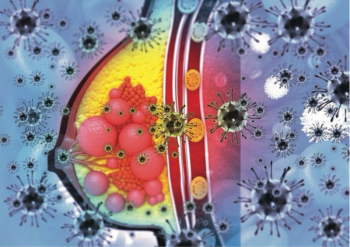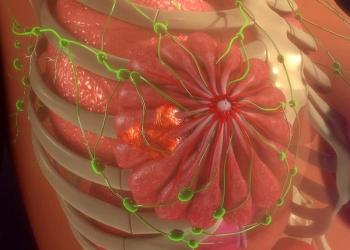
Oncology NEWS International
- Oncology NEWS International Vol 10 No 12
- Volume 10
- Issue 12
Stromal Cells May Be Involved in Development of Breast Carcinoma
COLUMBUS, Ohio-New evidence suggests that the genetic changes leading to breast cancer occur first in the epithelium of breast tissue, and then are followed by corresponding alterations in the surrounding stroma.
COLUMBUS, OhioNew evidence suggests that the genetic changes leading to breast cancer occur first in the epithelium of breast tissue, and then are followed by corresponding alterations in the surrounding stroma.
"We used to think that the surrounding structure of the cancer cell was just a silent bystander in the process of carcinogenesis. Now we know better," said Charis Eng, MD, PhD, William C. and Joan E. Davis Professor and director of the Clinical Cancer Genetics Program, Ohio State University Comprehensive Cancer Center.
The study, published in Human Molecular Genetics (September 1, 2001), suggests that the development of breast cancer is a multistep, multicell process.
A new technology, laser capture microdissection (LCM), allowed the researchers to isolate cancer cells from normal cells and to separate epithelial cells from stromal cells. The laser beam can dissect tumors one cell at a time.
"Before LCM, the study of cancer genetics entailed grinding up a lump of tumor comprising a mixture of cells and examining the "mixed bag" of cells for gene alterations," Dr. Eng told ONI.
Using LCM, the researchers microdissected each compartment of 41 sporadic invasive breast adenocarcinomas. They extracted DNA from each set of cells and measured the specimens for loss of heterozygosity (LOH), a technical indicator for the loss of a tumor suppressor gene.
The investigators found LOH frequently in both types of cells: From 25% to 69% of the neoplastic epithelial cells showed LOH, as did 17% to 61% of the surrounding stromal cells. The higher frequency of LOH in the neoplastic epithelial tissue suggests that mutations there might precede changes in the surrounding stroma.
"Most researchers in human cancer genetics believe that the earliest genetic event in any cancer is represented by the most frequent event. In our case, that was LOH. Thus, by arraying the most frequent LOHs first and the least frequent LOHs later, we have proposed a model of multistage carcinogenesis of serial or parallel LOH at specific markers in the epithelium vs stroma," she said.
Dr. Eng stressed that if these observations are replicable, the findings might dramatically alter both breast cancer treatment and prevention. "We currently target everything. However, we think that novel therapies and preventive agents tailored for novel molecular targets in stroma might become possible and might represent a better strategy," Dr. Eng said.
Articles in this issue
almost 24 years ago
Elderly Colon Cancer Patients Benefit From Adjuvant Chemotherapyabout 24 years ago
Intercultural Facts About Cancerabout 24 years ago
18-Gene Cluster Found in ER-Positive Breast Cancersabout 24 years ago
Viread OK’d for Treating HIV With Other Antiretroviralsabout 24 years ago
Surgeons in New York Operate on Patient in Franceabout 24 years ago
Fulvestrant Reduces Cell Turnover Index More Than Tamoxifenabout 24 years ago
New Lung Cancer Campaign Launchedabout 24 years ago
CPDR Updates Its Prostate Cancer Websiteabout 24 years ago
NIAID Begins Phase I Trial of a DNA-Based HIV VaccineNewsletter
Stay up to date on recent advances in the multidisciplinary approach to cancer.

















































































